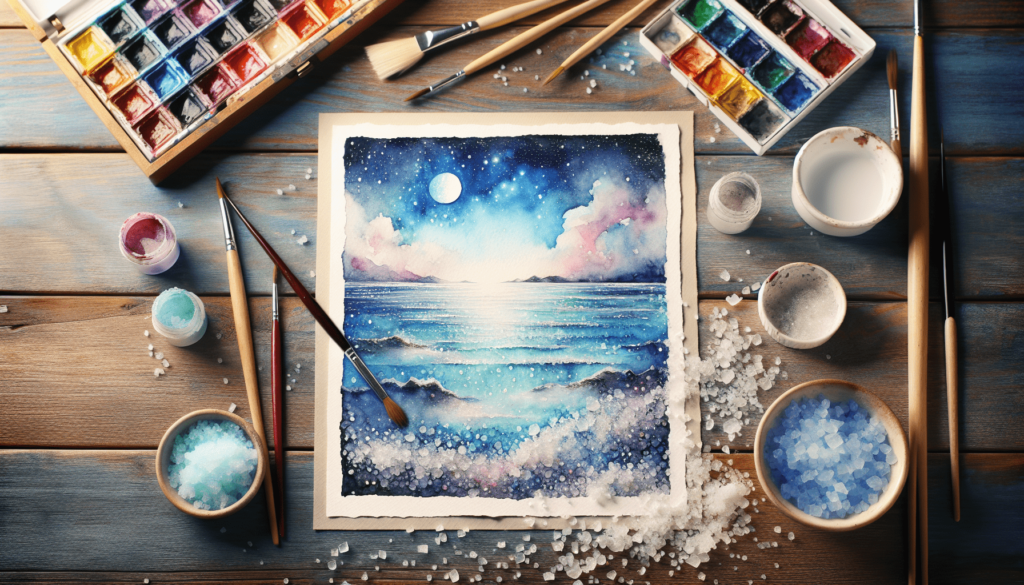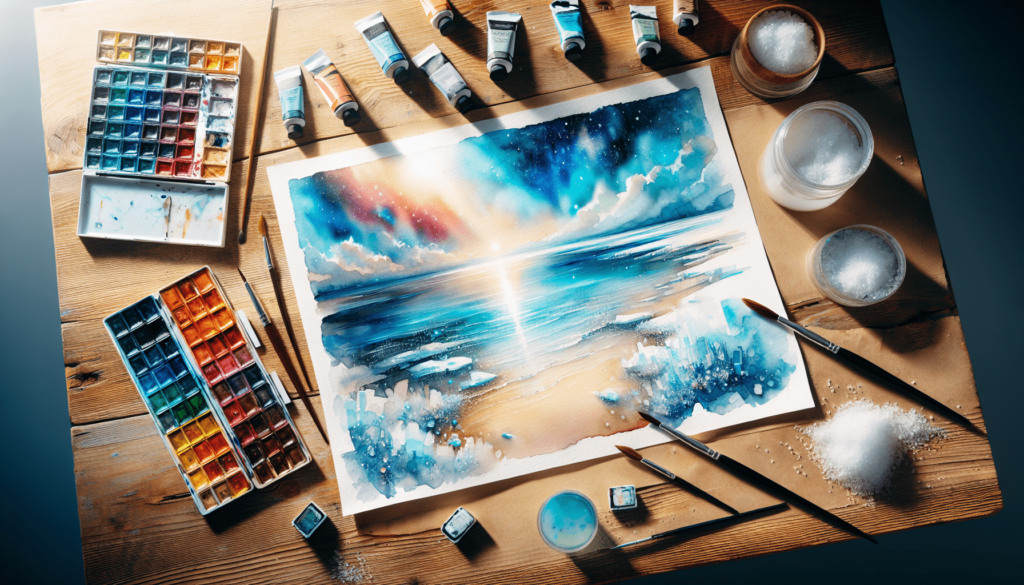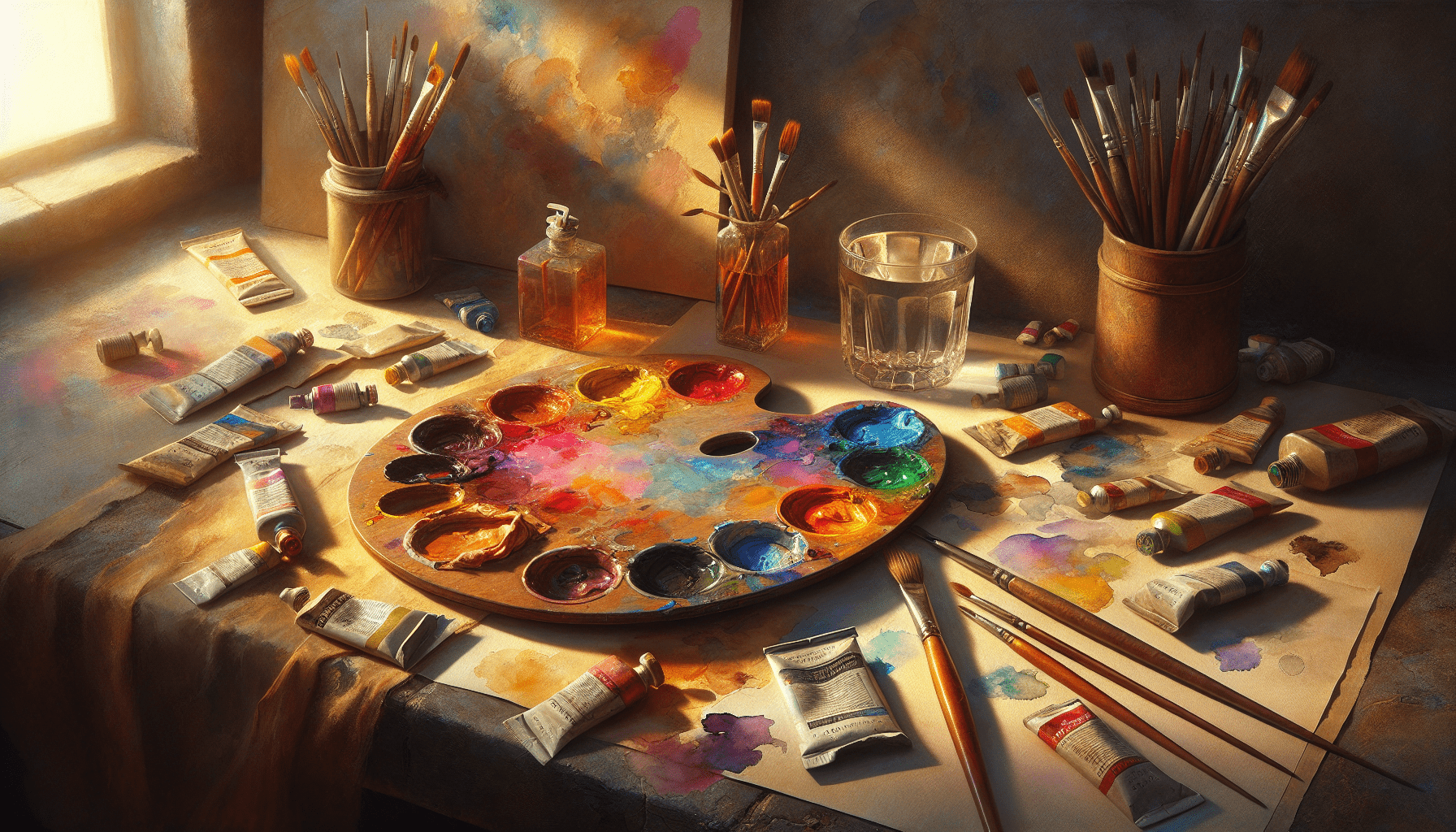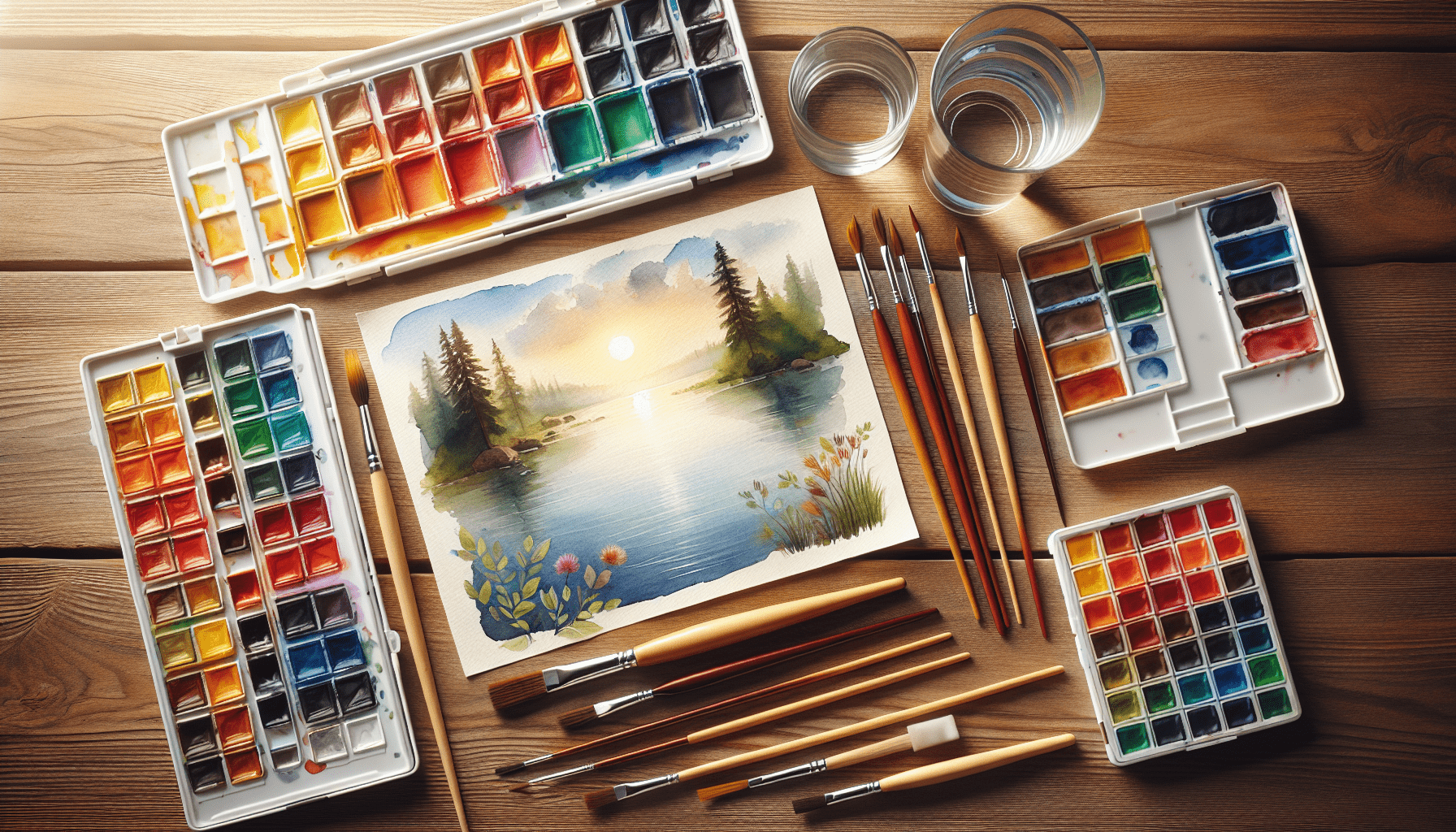In the exploration of artistic techniques, the unique combination of salt and watercolor offers an intriguing method to enhance your painting endeavors. You will discover how salt’s granular texture interacts with the fluidity of watercolors to create mesmerizing, textured effects on your canvas. This guide provides a step-by-step approach, elucidating the materials required and the precise techniques needed to leverage the transformative qualities of salt in watercolor painting. By the end of this article, you will have the knowledge and skills to elevate your artwork, adding depth and complexity through this innovative method. Have you ever considered incorporating unconventional methods into your watercolor painting techniques? Utilizing salt in conjunction with watercolor can yield wonderfully textured and visually intriguing effects that elevate your art to new heights. This professional guide will offer you comprehensive instructions on how to use salt and watercolor to paint a picture, exploring the materials needed, the process, and some advanced tips for enriching your artwork.
Introduction to Salt and Watercolor Art
Salt, an everyday household item, when combined with watercolor, can create astonishing and unique textures. By drawing moisture and pigment from the paint, salt forms crystalline patterns that can add depth and intrigue to your work. This guide seeks to provide an exhaustive look at integrating salt into your watercolor painting technique, ensuring that you harness this combination effectively to create appealing artwork.
Essential Materials
Before delving into the technique, it is pivotal to gather all necessary materials. Here’s a comprehensive list of what you’ll need:
Watercolor Paints
Choose high-quality watercolor paints that possess good pigmentation. Both tube and pan watercolors work well, but the choice depends on personal preference.
Watercolor Paper
The type of paper you use substantially affects the outcome. Opt for cold-press watercolor paper which is textured and absorbs water well, forming a good base for salt application.
| Type of Paper | Texture | Weight |
|---|---|---|
| Cold-Press Paper | Slightly Grainy | 140 lb (300gsm) or more |
Salt Varieties
Different types of salt can yield varying textures:
- Table salt: Produces fine, delicate textures.
- Kosher salt: Gives more defined and irregular patterns.
- Rock salt: Creates bold, distinct crystallized effects.
Brushes
Have an assortment of brushes, from fine to broad tips. Round brushes are particularly versatile for watercolor techniques.
Miscellaneous Materials
- Water containers for rinsing brushes.
- Palette for mixing colors.
- Masking tape to secure paper if needed.
- Paper towels for blotting.

Preparing Your Work Area
Setting up your workspace efficiently can impact the ease and outcome of your painting process. Follow these preparatory steps for an optimal work environment:
- Secure Your Paper: Use masking tape to affix your watercolor paper to a sturdy surface. This prevents the paper from warping when it gets wet.
- Organize Your Materials: Arrange your paints, brushes, salt, water containers, and paper towels within arm’s reach to facilitate a smooth workflow.
- Test Your Technique: Practice on a small piece of paper to understand how your chosen salt reacts with your specific watercolor paint and paper.
Basic Watercolor Techniques Before Adding Salt
Before incorporating salt, it’s essential to have a solid understanding of foundational watercolor techniques. Here’s a brief rundown:
Wet-on-Wet Technique
This involves applying a wet brush loaded with paint to a wet surface. This method allows colors to blend organically, creating soft edges and gradients.
Wet-on-Dry Technique
Applying wet paint to a dry surface, this technique provides sharp, well-defined edges and is ideal for detail work.
Layering
Watercolor requires building layers to develop depth. Start with lighter colors and gradually add darker tones as the previous layers dry.

Applying Salt to Your Watercolor Painting
Creating the Wash
Begin by painting a wash using your preferred technique. Wet-on-wet works particularly well for applying salt since it maximizes the absorption and spread of the salt crystals.
Sprinkling the Salt
Once your wash is ready, moderately sprinkle salt onto the wet paint. The coarseness and density of the salt application will influence the resulting texture.
Observing the Reaction
Allow the salt to remain on the paint until the paper is completely dry. As it dries, you will observe the paint being drawn towards the salt, forming intriguing textured patterns.
Removing the Salt
Once the paint is dry, gently brush off the salt. Use a soft brush or your fingers to ensure you don’t damage the paper or alter the intended texture.
Advanced Techniques and Variations
Experiment with Different Salts
Experimenting with various salt types can result in a broad spectrum of textures. Creating a swatch sheet using different salts and paint colors can serve as a reference for future projects.
Manipulating Timing
The timing of salt application can significantly affect the texture. Applying salt immediately after the wash introduces stronger, more defined textures, while waiting until the wash is semi-dry results in subtler effects.
Combining Techniques
Using salt selectively in combination with traditional watercolor techniques such as masking fluid or lifting can add complexity and layering to your artwork.
Layering Salt Effects
To achieve more intricate patterns, consider applying salt in layers. Remove the salt after the first layer dries, then apply another wash and repeat the process.
Troubleshooting Common Issues
Uneven Salt Patterns
This often results from the uneven application of water or salt. Ensure a consistent wash and sprinkle salt uniformly for balanced textures.
Overly Harsh Edges
If the texture appears too stark, it may be due to too much salt or leaving the salt on for too long. Adjust the quantity and timing to achieve softer, more natural textures.
Minimal Texture Formation
This issue can arise from insufficient moisture in the wash. Ensure the surface is adequately wet before sprinkling the salt.
Damage to Paper
Removing salt too aggressively can damage fine watercolor paper. Always brush off salt gently to maintain the integrity of your artwork.
Care and Maintenance Tips
Cleaning Brushes
Thoroughly rinse brushes after usage to remove both paint and salt residues. A mild soap can be used for a deeper clean, especially for natural hair brushes.
Storing Materials
Store paints and paper in a cool, dry place. Exposure to humidity can affect paper quality and the performance of watercolors.
Workspace Cleanliness
Clean your workspace after each session to prevent salt or paint residues from contaminating future work.
Inspiration and Examples
Exploring works by accomplished artists who employ salt in their watercolor paintings can inspire and inform your own practice. Here are some notable examples:
- Artist A: Utilizes rock salt to create dramatic sky textures.
- Artist B: Blends table salt with fine brushwork for intricate foliage details.
- Artist C: Experiments with multiple salt types in abstract compositions, achieving varied textures and effects.
Conclusion
Integrating salt into your watercolor paintings offers a fascinating and innovative way to enhance texture and depth in your artwork. By understanding the materials, mastering foundational techniques, and experimenting with advanced methods, you can harness the full potential of this unique combination. Whether you are a novice or an experienced artist, these insights and strategies will facilitate your journey in creating visually captivating watercolor paintings.



